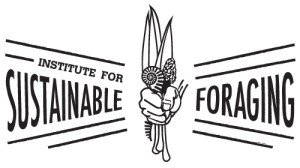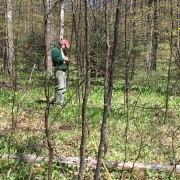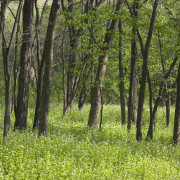Institute for Sustainable Foraging joins the Newman’s Own Foundation $500k Holiday Challenge
 Institute for Sustainable Foraging (ISF) has joined the Newman’s Own Foundation $500k Holiday Challenge, a fundraising competition on CrowdRise, the largest crowdfunding platform for good. Newman’s Own Foundation $500k Holiday Challenge is a friendly fundraising campaign for eligible US-based 501(c)3 charities. Participating organizations will compete for $500k in prize money. The Institute has joined the challenge on CrowdRise in hopes of raising money to support the launch of its Certified Sustainably Foraged Program.
Institute for Sustainable Foraging (ISF) has joined the Newman’s Own Foundation $500k Holiday Challenge, a fundraising competition on CrowdRise, the largest crowdfunding platform for good. Newman’s Own Foundation $500k Holiday Challenge is a friendly fundraising campaign for eligible US-based 501(c)3 charities. Participating organizations will compete for $500k in prize money. The Institute has joined the challenge on CrowdRise in hopes of raising money to support the launch of its Certified Sustainably Foraged Program.
Foraged foods such as ramps (wild leeks), fiddlehead ferns, a range of wild mushrooms, and other wild-crafted products are garnering wider recognition as tasty, versatile, seasonally aligned foods, and their popularity has increased dramatically. Demand from the finest chefs on both American coasts and major cities in between, is contributing to an exponential rise in foraging of these forest products.
The Newman’s Own Foundation $500k Holiday Challenge launched on CrowdRise on November 21, 2017 at 12pm ET and runs through January 3, 2018 at 1:59:59pm ET. There are 10 grand prizes up for grabs with the team that raises the most online winning $150,000 and 10th place winning $2,500. On #GivingTuesday an additional $85,000 will be awarded to the top 3 charities. Plus, weekly Bonus Challenges enable charities to win up to another $115,000.
CrowdRise Challenges are innovative fundraising competitions for charitable organizations designed to build capacity, create massive engagement and leverage, and use the power of the crowd to provide new meaningful funding streams for organizations in every sector.
To help the Institute for Sustainable Foraging win the Newman’s Own Foundation $500k Holiday Challenge head here.
ABOUT INSTITUTE FOR SUSTAINABLE FORAGING
The rise in popularity of foraged goods continues unabated, driven both by the enthusiasm of personal foragers who enjoy the experience of gathering unique woodland foods and the desire of chefs to work with seasonal and genuinely “American” ingredients. This increase in foraging continues to raise questions about the sustainability of these wild food resources, particularly in cases where they are not being harvested according to known best practices for protecting their ongoing role in our forest ecosystems and the great American cookbook.
The Institute for Sustainable Foraging was established in response to these growing concerns. We have endeavored to combine the best available science with the deepest field experience and observations in order to create a “Certified Sustainably Foraged” program. This program allows consumers and foragers alike who have an interest in the conservation of non-timber forest products (NTFPs) to build a culture of responsible use with the legacy of these unique and storied foods at its heart. For more information, visit www.sustainablyforaged.org.
ABOUT NEWMAN’S OWN FOUNDATION
Newman’s Own Foundation is celebrating 35 years of giving and $500 million to thousands of charities, helping millions of people. As Paul Newman would say, “giving back is just the right thing to do.”
Newman’s Own foundation was founded by the late actor Paul Newman to continue his philanthropic legacy and help make the world a better place. The Foundation turns all net profits and royalties from the sale of Newman’s Own food and beverage products into charitable donations. For more information, visit www.newmansownfoundation.org.
ABOUT CROWDRISE
CrowdRise is the world’s largest crowdfunding platform dedicated exclusively to charitable fundraising. Used by millions of individuals, tens of thousands of charities, hundreds of companies and many of the most famous artists and athletes in the world, CrowdRise enables people to creatively leverage their resources and networks to unlock the power of the crowd to support positive social missions and create massive impact.
Founded by actor Edward Norton, film producer Shauna Robertson and Robert and Jeffrey Wolfe, CrowdRise has conceived, implemented and powered campaigns that have raised hundreds of millions of dollars to date. For more information visit www.CrowdRise.com. In January 2017, CrowdRise merged with GoFundMe to offer both people and organizations the best fundraising tools for any cause they care passionately about.





